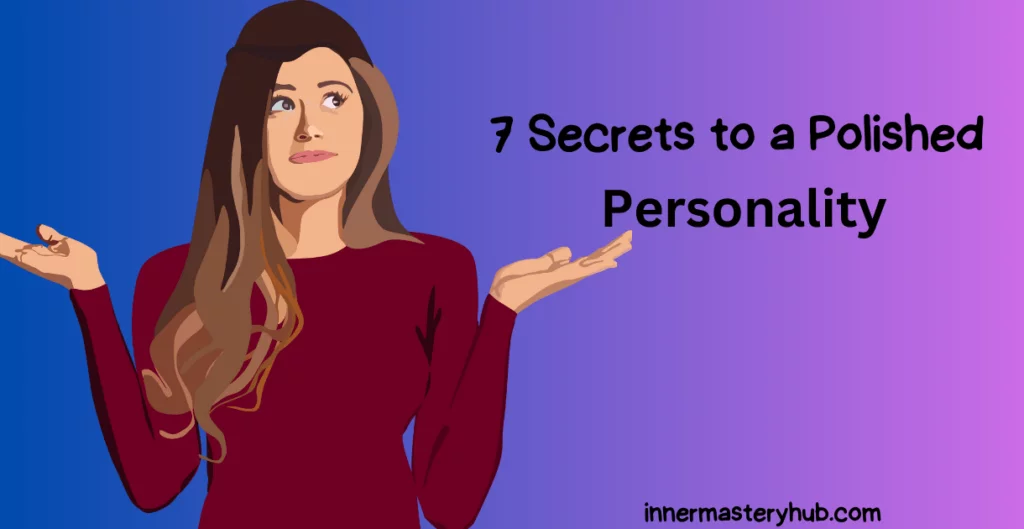
Discovering tension in the neck and shoulders can feel like carrying an unnecessary burden that weighs you physically and emotionally. It’s like having an unwanted companion tagging along, making every movement uncomfortable. So, what causes this discomfort?
Poor posture, carrying stress, and even extended periods of inactivity can be culprits. But don’t worry; in this blog post, we’ll dive deep into the reasons behind muscle tension in the neck and shoulders, share some handy strategies for relief, and guide you to a pain-free lifestyle. Our goal is to give you the knowledge to understand your body better and help you on your journey to health and wellness. Let’s get started, shall we?
Can Stress Cause Shoulder Pain?
Carrying stress can contribute to shoulder and neck pain. When we experience stressful situations, our bodies tense our muscles as part of the natural fight-or-flight response. This muscular tension is often the most noticeable symptom in the shoulders and neck.
A study published in the Journal of Physical Therapy Science found a significant association between psychological stress and neck and shoulder pain, particularly among office workers. The study highlighted that high perceived stress and prolonged computer work were linked to spine-shoulder aches, emphasizing the importance of stress management and ergonomic interventions in the workplace
Table of Contents
Can stress cause tension in the neck and shoulders?
Anxiety and stress can contribute to developing neck pain and even shoulder joint tension. According to the American Institute of Stress, bodily manifestations of stress can include headaches, back and neck pain, and muscle tension or spasms, particularly in the neck and shoulders. When experiencing anxiety, the body’s “fight or flight” response is triggered, releasing stress hormones. These hormones cause tissues to tense up, preparing for potential danger.
If the hurt persists, the muscles may be unable to relax, leading to chronic muscle tension. Over time, this tension can become chronic, establishing a cycle of stress and pain that can be challenging to break.
Why Does Stress Lead to Neck and Shoulder Pain?
Stress, a psychological phenomenon, has a profound impact on our bodies. According to Dr Alice Jones, a renowned physiotherapist, our bodies respond in a fight-or-flight mode when our minds perceive stressful situations as threatening.
This survival mechanism prepares our bodies to confront stressful situations or flee perceived health issues, releasing stress hormones like adrenaline and cortisol. As a result of bodily reactions to stressful situations, we experience rapid heart rate, high blood pressure, and tense muscles, especially in the neck and shoulders.
Let’s consider the case of Jane, a 35-year-old software engineer who struggles with chronic cervical and left shoulder back pain. The pain persists despite her efforts to maintain an ergonomic setup and take regular breaks. After consulting with a physiotherapist, she realized her constant work stress was the primary cause.
Jane’s experience highlights that chronic stress can manifest physically, leading to noticeable symptoms such as tension headaches, neck stretches, and shoulder pain, migraines.[2]
Shoulder rolls
Another exercise that can prove beneficial in relieving tension in the neck and shoulders is the shoulder roll. This simple yet effective exercise can be done practically anywhere and requires no special equipment. Begin by standing or sitting upright, lifting your shoulders towards your ears. Slowly roll your shoulders forward and backward in a circular motion, attempting to squeeze your shoulder blades together.
Then, lower your shoulders and continue this rolling motion for about 10 to 15 repetitions. Make sure to perform the movements in a slow and controlled manner. This exercise stretches out tense cervix, neck, and shoulder muscles well. It promotes better posture by reminding your body of its natural alignment and reducing tension in the neck and shoulders.
Stretches for neck and shoulder pain
Several stretches and exercises can help alleviate cervical and shoulder aches. For example, a study published in the International Journal of Physiotherapy and Research shows that cervix and shoulder stretching exercises significantly reduced pain and improved range of motion among office workers suffering from chronic cervix and shoulder pain.
One widely recommended stretch is the levator scapulae stretch, which targets the muscle running down the back of the head through the head and cervix and into the shoulder. To perform this stretch:
- Tilt your head to the left side as if trying to touch your ear to your shoulder.
- Use your left hand, on the same side, to gently pull your head down, deepening the gentle stretch to release tension in the neck and shoulders.
- Repeat on the opposite side.
Let’s consider the case of Mark, a 45-year-old lawyer who frequently experienced back, left hand, left shoulder joint, side, and shoulder back pain due to long hours sitting at his desk. After incorporating these stretches recommended by a physiotherapist into his daily routine, Mark experienced a significant decrease in his pain levels.
Now, he advocates for regular breaks and stretching exercises for all his colleagues, emphasizing the importance of bodily well-being in maintaining productivity.
The Stress Response Leads to Physical Symptoms
The human body is a complex system that responds to hurt in various ways, and many manifest as physical symptoms. One particularly prevalent response is the activation of the nervous system, in which the body shifts into ‘fight or flight’ mode. In this state, stress hormones such as adrenaline and cortisol are released, leading to physiological changes: heart rate and blood pressure increase, digestion slows, and muscles tense up.
This response readies the body to either confront or escape the perceived threat. However, when a person is under chronic stress, these responses can persist for a long, leading to somatic symptoms such as headaches, sleep disorders, and muscle tension in the neck and shoulders.
Hot or Cold Therapy
Applying hot or cold therapy can significantly assist in managing stress-induced cervix and shoulder aches[4]. Hot treatment improves circulation and can increase blood flow back to the affected area, reducing stiffness and promoting healing. Heat therapy can be administered through a hot bath, heating pads, or heat wraps.
Cold medicine, or cryotherapy, reduces inflammation by decreasing blood flow. This can be particularly useful immediately following a new injury. Cold treatment can be applied using gel ice packs or cool compresses. Both hot and cold therapies have their merits and can temporarily reduce aches, but it’s crucial to understand when to use each method. As a rule, use heat for chronic pain or stiffness and cold for acute injuries or inflammation.
Final Thoughts On Carrying Stress And Tension in the Neck And Shoulders
In conclusion, the prevalence of shoulder and neck stress is a common issue among individuals with sedentary lifestyles, particularly those in desk jobs. The physiological stress response can result in chronic pain in these areas. However, it is possible to alleviate these body symptoms by incorporating regular stretching exercises and effectively managing stress.
Additionally, the use of hot or cold therapy can provide immediate relief. It’s important to remember that addressing the root cause of chronic stress is just as crucial as managing bodily symptoms. Therefore, integrating stress management techniques such as mindfulness and belly breathing exercises can be equally advantageous. As everyone’s body responds differently to stress, it is vital to listen to your body’s stress response and provide it with the necessary care.
Other Ways to Deal with Stress in the Neck and Shoulders
Besides the mentioned methods, there are other effective ways to reduce neck and shoulder tension and stress. Regular body activity, like yoga or Pilates, relieves neck and shoulder muscle and tissue tension and promotes relaxation through flexibility, balance, and strength.
Massage therapy, whether professional or self-administered, eases muscle tension, improves circulation, and induces relaxation. Optimizing the starting position of your workstation setup with ergonomic adjustments can significantly reduce neck and shoulder aches caused by poor alignment.
Mayo Clinic. (2021). Massage: Get in touch with its many benefits. https://www.mayoclinic.org/healthy-lifestyle/stress-management/in-depth/massage/art-20045743.
Mayo Clinic. (2021). Office ergonomics: Your how-to guide. https://www.mayoclinic.org/healthy-lifestyle/adult-health/in-depth/office-ergonomics/art-20046169.
Symptoms of Shoulder and Neck Stress
The symptoms of shoulder and neck stress can vary depending on the individual and the severity of their stress. Common symptoms generally include:
- A persistent ache in the neck and shoulders.
- Stiffness in the shoulders and neck.
- Difficulty moving the head in specific directions.
Some might also experience tension headaches, often manifest as a dull ache around the forehead or at the back of the head and neck. More severe symptoms could include sharp shooting pains in the cervical area and more carrying stress and tension in the neck and shoulders, suggesting a more severe issue, such as a pinched nerve.
Other associated symptoms can include numbness, tingling, weakness in the arms or hands, difficulty sleeping due to pain and discomfort, and muscle spasms in some cases. It’s vital to consult a healthcare provider if these symptoms persist or cause significant discomfort.
Can physical therapy help with stress-related neck and shoulder pain
This is why manual therapy is powerful for managing stress-related tension in the neck and shoulders. A trained physical therapist can develop a personalized exercise regimen to strengthen tissues and improve flexibility, promoting better body alignment and reducing pressure.
Education in body mechanics and ergonomics helps prevent aches from desk jobs or repetitive tasks. Therapies like dry needling or TENS can relieve chronic neck and shoulder pain. Somatic treatment offers immediate relief and long-term strategies for managing cervical and shoulder pain stress-related.
Apply a warm compress.
A warm compress to the back, cervix area, and shoulder can relieve stress-induced tension. The warmth enhances blood circulation, relaxes the stiff neck muscles, and offers immediate pain relief. You can easily create a warm compress at home by soaking a towel in warm water or using a hot water bottle or heated gel pack.
Make sure the temperature is comfortable to prevent burns. This method works well with other techniques like regular physical activity, mindful breathing, and ergonomic adjustments at the workstation.
Learn How to Manage Stress
Learning to manage stress is an essential skill that significantly improves overall well-being. Effective strategies include mindfulness and meditation, regular exercise, healthy eating, adequate sleep, and seeking social support. These practices can reduce stress, boost mood, and enhance overall well-being, mental health, and quality of life.
Tips for Relieving Shoulder and Neck Stress
When experiencing shoulder and neck pressure, involve relaxation techniques like belly breathing and meditation in your daily routine. Mindful movements like yoga or tai chi can help alleviate tension. Consider your workspace ergonomics; adjust your chair and computer height to encourage good alignment.
Regular breaks from prolonged sitting or standing can also prevent strain. For immediate hurt relief now, try a warm compress to relax muscles. Seek professional help, like body therapy for persistent discomfort, which provides personalized pain relief and prevention strategies.
Getting Enough Sleep
Getting sufficient sleep is paramount for overall health and stress management. It offers the body time to repair and rejuvenate, thus enhancing mood, cognitive function, and physical energy. To promote quality sleep, maintain a consistent sleep schedule, create a restful environment, and consider relaxation techniques before bedtime.
REFERENCES
[1] Lundberg U, Dohns IE, Melin B, et al. Psychophysiological stress responses, muscle tension, and neck and shoulder pain among supermarket cashiers. Journal of Occupational Health Psychology. 1999;4(3): 245–255. doi:10.1037//1076-8998.4.3.245
[2] https://headachejournal.onlinelibrary.wiley.com/doi/abs/10.1111/head.13215
[3] https://www.ncbi.nlm.nih.gov/pmc/articles/PMC5843960/
[4] https://www.ncbi.nlm.nih.gov/pmc/articles/PMC9281090/
FAQs
How do I eliminate stress in my neck, muscles, stiff neck, and shoulders?
Try these methods to reduce and relieve tension in your neck and shoulders:
Breathing deeply
Progressive muscle relaxation
Applying heat or cold, routine exercise
Stretching
Maintaining good posture
Thinking about massage therapy
Getting professional assistance if necessary
Why do I carry all my stress on my shoulders?
Due to muscle tightness brought on by the body’s natural reaction to stress, the shoulders frequently carry the brunt of physical reactions to the body’s stress response. Increased tension in the neck and shoulders can lead to stress buildup in that area due to poor body alignment, extended sitting, and mental distress.
How do you get rid of stress tension in your neck and shoulders?
Try the following to relieve tension, relax your head, neck, arms, and shoulders, and reduce stress: To release and reduce tension in the neck and shoulders and promote relaxation and ease muscle tension, use stress management strategies like deep breathing and meditation;
engage in regular exercise and stretching; use hot or cold packs; think about massage therapy or physical therapy; and place a high priority on self-care activities.
What does it mean when you carry stress in your arms, shoulders and neck?
When you hold stress in your neck and shoulders, the muscles and tissues around your spine and neck experience tension and tightness. Poor posture, prolonged sitting, physical activity, emotional tension, or muscle strain are a few common symptoms caused by this. Exercises for stretching and relaxation can aid with symptom relief.
6 Tips to Relieve Anxiety-Related Tension in the Neck and Shoulders
Exercises for deep breathing can help relieve stress as you unwind.
Regularly work out to experience stress and decrease stress-release tension in the neck and shoulders.
Adjust your workspace’s ergonomics and maintain a standing position and excellent posture.
To calm and relax the tight muscles, use heat or cold packs.
Set aside an extended period each day to stretch and move around.
To relax your body and mind, think about doing yoga or meditation.






